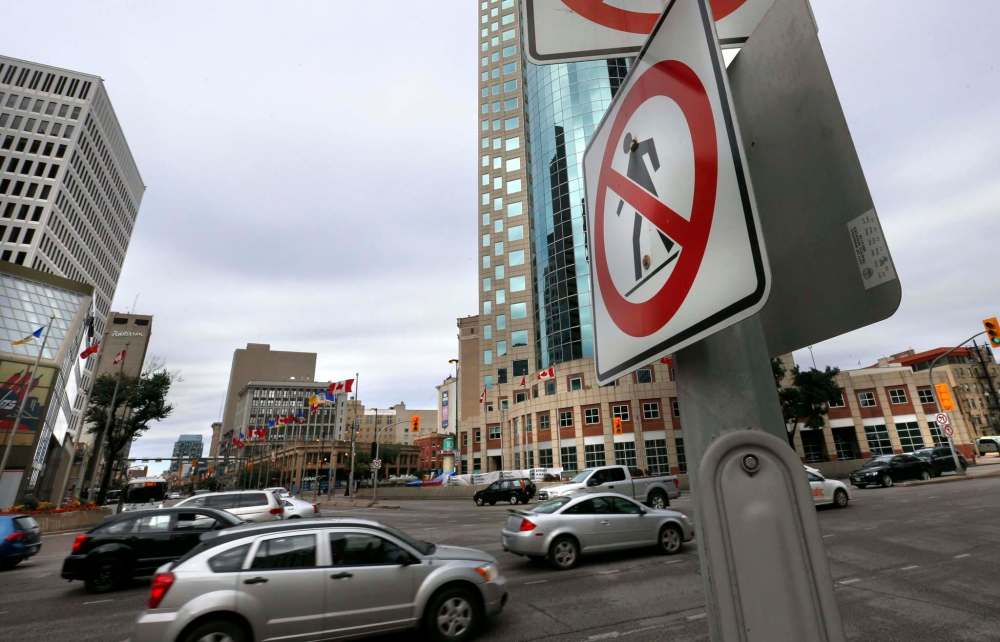Open intersection needs open process
Advertisement
Read this article for free:
or
Already have an account? Log in here »
To continue reading, please subscribe:
Monthly Digital Subscription
$0 for the first 4 weeks*
- Enjoy unlimited reading on winnipegfreepress.com
- Read the E-Edition, our digital replica newspaper
- Access News Break, our award-winning app
- Play interactive puzzles
*No charge for 4 weeks then price increases to the regular rate of $19.00 plus GST every four weeks. Offer available to new and qualified returning subscribers only. Cancel any time.
Monthly Digital Subscription
$4.75/week*
- Enjoy unlimited reading on winnipegfreepress.com
- Read the E-Edition, our digital replica newspaper
- Access News Break, our award-winning app
- Play interactive puzzles
*Billed as $19 plus GST every four weeks. Cancel any time.
To continue reading, please subscribe:
Add Free Press access to your Brandon Sun subscription for only an additional
$1 for the first 4 weeks*
*Your next subscription payment will increase by $1.00 and you will be charged $16.99 plus GST for four weeks. After four weeks, your payment will increase to $23.99 plus GST every four weeks.
Read unlimited articles for free today:
or
Already have an account? Log in here »
Hey there, time traveller!
This article was published 08/05/2017 (3108 days ago), so information in it may no longer be current.
In recent decades, enthusiastic campaigns to reopen Portage and Main to pedestrians have floundered on a major concern: what about the traffic?
Then, in 2014, Winnipeg elected a mayor who now seems intent on keeping his campaign promise to open the intersection, but that same concern remains: what about the traffic? Vehicles will be halted while eight lanes are crossed by pedestrians, some of whom will move more slowly than others. Many factors can limit one’s mobility, and a street crossing is only as quick as its slowest crosser.
Recently, Mayor Brian Bowman’s promise came considerably closer to reality when it was revealed that all property owners at the intersection now support the reopening. Still, what about the traffic? It has increased in the 38 years since pedestrians were barred from above-ground crossing of Portage and Main, and whatever enthusiasm the intersection’s reopening generates will disappear quickly if vehicles, including buses, are backed up for blocks during rush hours.

Some people will reason that, on such an important matter, the city should proceed cautiously and commission a professional study on how pedestrians and traffic will interact. And actually, the city already has. The Dillon Report, a consultant’s assessment of traffic impact that was completed last autumn, remains a secret document because the city’s chief administrative officer, Doug McNeil, refuses to make it public.
Mr. McNeil’s position is that the traffic report will make up part of an administrative report later this year on how the intersection should be reopened, what the impacts will be and how much it will cost.
He doesn’t want the traffic report released in isolation — a notion that some might interpret as a desire to limit scrutiny by concealing its details in a mass of other information.
His decision to hide the report for months should not sit well with Manitobans who have learned the hard way that governments can manipulate the timing and content of reports to suit their various agendas.
Last month, the public learned it will never get to see a taxpayer-funded provincial fiscal performance audit, which cost $740,000. The premier and key ministers had promised repeatedly that 97 per cent of the KPMG audit would be made public, but broke this pledge after they received the final report on March 31. That audit will now be kept secret, apart from whatever morsels the government decides are safe for the public to know.
Governments that respect democracy should open the vault and give the public timely and full access to reports that after all, were paid for by the public.
In the case of the Portage and Main traffic study, the information being kept under wraps by city hall will be of considerable interest to many, including the owners of businesses whose livelihoods depend on anticipating big changes in vehicle and pedestrian flows. Telling stakeholders in the underground concourse they must wait months to read the traffic report will certainly handicap them as they try to make informed business decisions today.
The civic bureaucracy has been criticized publicly by councillors for making decisions that are more properly made by elected officials, and for presenting reports without adequate time for counsellors to absorb the content and prepare for debate.
The process to reopen the intersection should itself be open. It’s about accountability. Mr. McNeil should either release the traffic report or give a more credible reason why it’s still secret.

